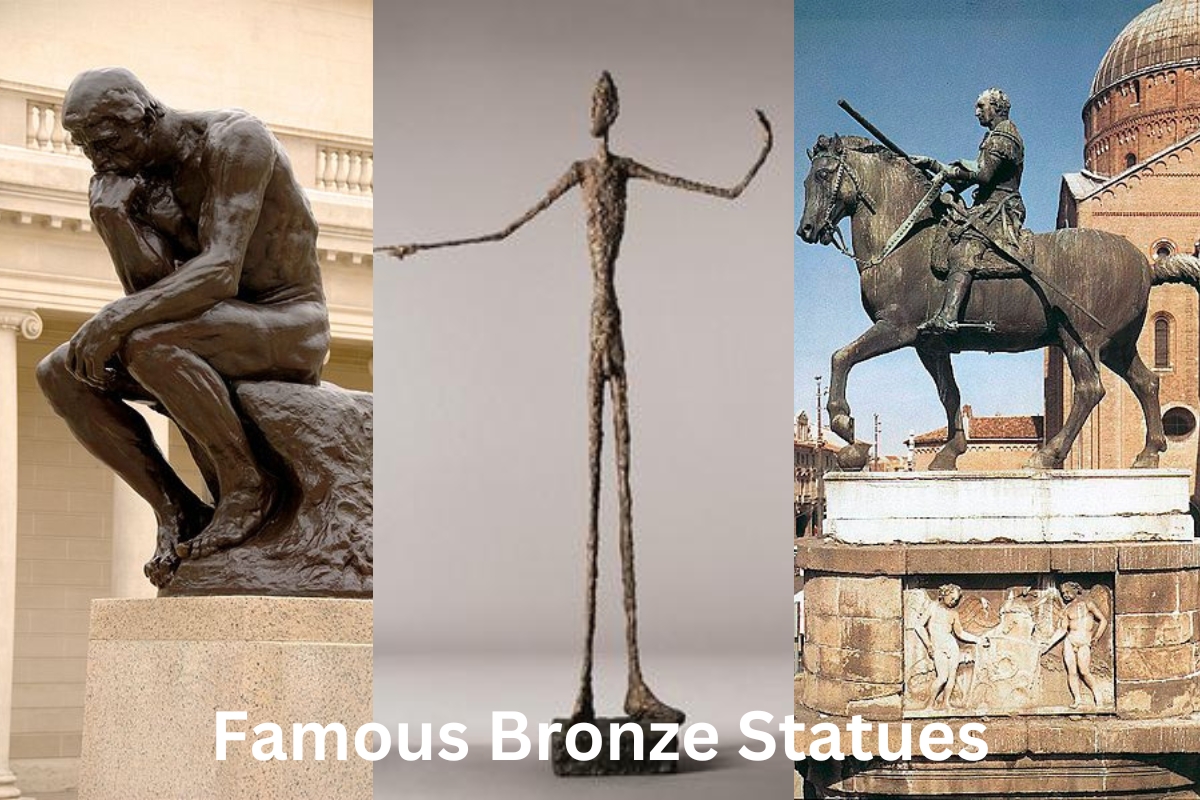The term “bronze” is often used interchangeably with “cast bronze statue” because bronze is the metal most commonly used to create cast metal sculptures.
Bronze can be used to make statues, sculptures (both standalone and part of a set), reliefs, miniature statuettes and figurines, and components that can be attached to larger pieces like furniture. It’s commonly gilded to create gilt-bronze or ormolu.
Bronze alloy’s useful trait is that it expands somewhat right before it sets, allowing it to completely fill even the tiniest crevices in a mold. The bronze contracts slightly as it cools, easing its removal from the mold.
When compared to different ceramic or stone materials, they have the benefit of strength and ductility (lack of brittleness), making them ideal for the creation of figures in action positions (unlike marble sculptures).
Large ancient bronzes are rare because they were often melted down to manufacture weapons or ammunition during conflict or to construct new sculptures celebrating the victors.
More stone and ceramic works have survived through the years, if only in fragments, due to the stone material being less valuable.
Below are some of the most Famous Bronze Statues and Sculptures in the history of art.
Famous Bronze Statues
1. The Thinker – Auguste Rodin
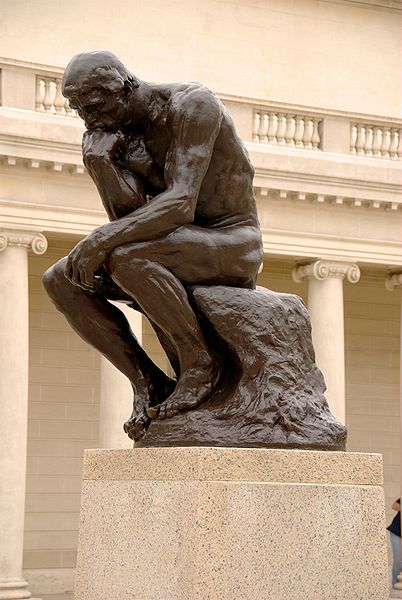
Certain sculptures are not just among the most iconic in history, but are instantly recognizable to anyone.
While several of Rodin’s sculptures are commonly considered to be among the most famous examples of their kind, there is one in particular that stands out as a clear frontrunner for the title.
The Thinker, a sculpture by Auguste Rodin created in 1904, is widely considered to be one of the most iconic pieces of art ever made.
Also Read: Famous Bronze Sculpture Artists
This bronze sculpture is often cited as Rodin’s masterpiece; it has been copied so many (30 times!) that the French sculptor and his students have likely all had a hand in at least some of them.
This sculpture was commissioned in 1880 and was originally created by Rodin as a companion piece to his larger masterpiece The Gates of Hell. Rodin got inspiration for his sculpture The Poet from Dante’s Divine Comedy.
The Thinker has been interpreted by some as Dante himself, sitting at the gates of hell and contemplating his masterpiece.
2. David – Donatello
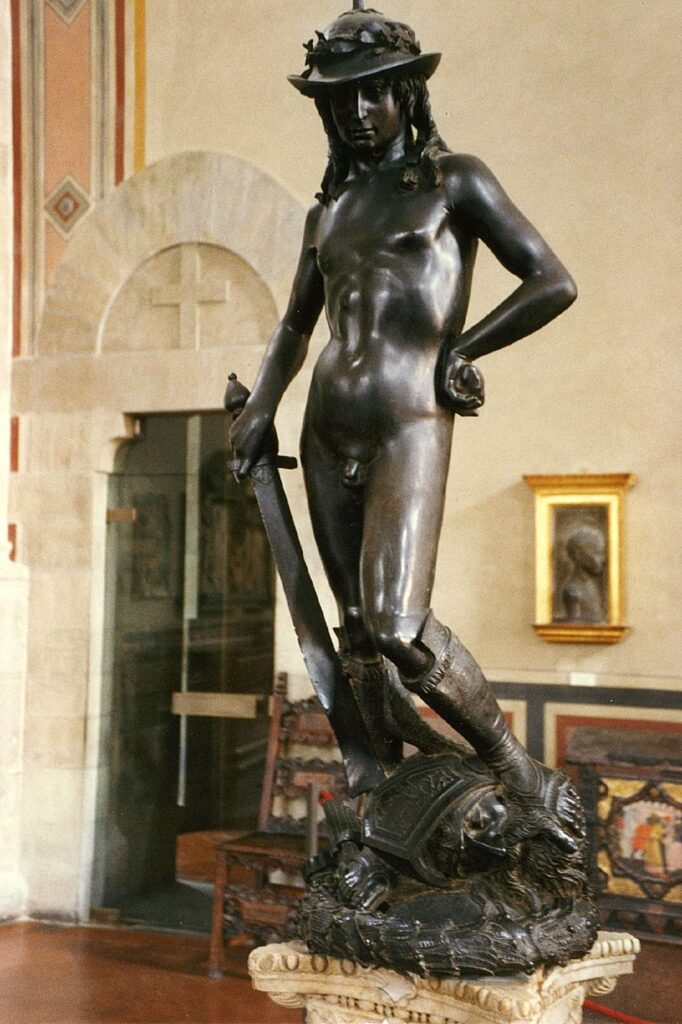
Some of the best scholars and historians in the field agree that David is one of Donatello’s finest works.
This statue presents a very different interpretation of the biblical hero David, who is credited with governing the Israelites for a long period of time, than Michaelangelo’s famous David.
Donatello created two statues, both of which are commonly referred to as “David.”
Many scholars agree that the first of these statues was cut from marble around the year 1408. This image of David from the Bible shows the biblical hero dressed in clothing that could have been more common during his day.
Also Read: Metal Sculpture Artists
Donatello, only in his twenties when he created this sculpture, was not yet the famous artist he would become.
While the exact year of the statue of David’s completion is unknown, many experts agree that it was likely made sometime in the 1440s. Because of its remarkable appearance, this bronze statue of the well-known biblical figure is the most well-known of the two.
Donatello’s version of David included him clothed just in a huge feathered hat, as was fashionable in Italy at the period. The statue is armed with a sword and is posed on a suit of armor.
3. Perseus with the Head of Medusa – Benvenuto Cellini
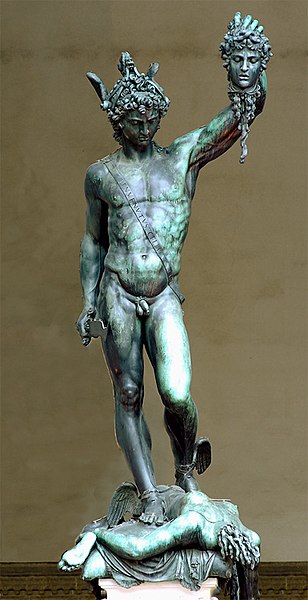
Benvenuto Cellini was a prominent Italian sculptor of the Renaissance period..
Intricate sculptures of biblical and mythological figures from Greek and Roman mythology were among his many works. The sculpture “David” by Cellini is often regarded as among the best works of art ever created in Florence.
Cellini’s sculpture, titled Perseus with the Head of Medusa, is a famous depiction of the mythical story of the Greek hero who defeated the monster Medusa with a daring act of valor and cunning.
The bronze figure dates back to what is thought to be 1554. Perseus stands naked on Medusa’s smashed body, her head held high in his left hand as he grips his sword tightly in his right.
This sculpture can be seen at the Loggia dei Lanzi in Florence’s Piazza della Signoria.
4. Equestrian Statue of the Gattamelata – Donatello
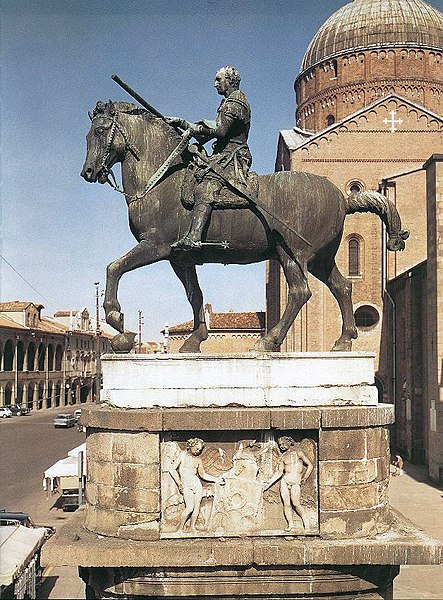
The Piazza del Santo in Padua, Italy is home to Donatello’s Equestrian Statue of Gattamelata, a 1453 Italian Renaissance artwork.
This portrait is of Erasmo da Narni, better known by his nickname “Gattamelata,” a condottiero who mostly served the Republic of Venice, which ruled Padua at the time. In the history of the Italian Renaissance, this statue is the first life-size depiction of a rider on a horse.
It is the first to restore the grandeur of Classical equine portraiture and the earliest surviving Renaissance equestrian statue, measuring 340 × 390 cm (the base measures 780 x 410 cm).
After its inception, the statue became a model for subsequent sculptures commemorating war heroes.
The figure, like all bronze statues created at the time, was cast using the lost wax technique. The condottiero and his horse are depicted at life size in this statue, which is mounted on a pedestal.
Donatello employed the soldier’s expression, posture, and symbolism to communicate the same message as the classical Equestrian Statue of Marcus Aurelius in Rome, which emphasizes the subject’s strength through a hierarchy of scale.
5. Monument to Balzac – Auguste Rodin
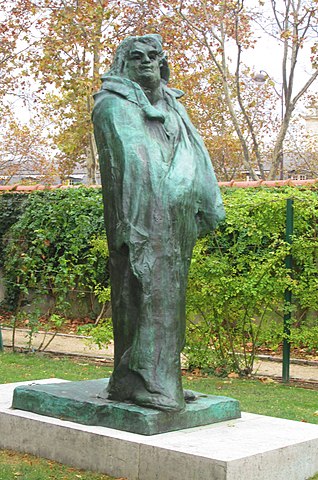
French novelist and dramatist Honoré de Balzac made waves in the early 1800s with works like The Tale of Two Cities and The Three Musketeers.
After the death of writer Honoré de Balzac, a young artist named Auguste Rodin was asked to create a sculpture in his honor.
While at least three other sculptors had been considered for the project, it ultimately went to Rodin in 1891.
Rodin visited Balzac’s village and read the author’s diaries in order to gain insight into the man and his motivations as an artist.
At 1898, Rodin constructed a life-size plaster figure of the renowned author and showed it at a Salon in the Champ de Mars. The Société des Gens de Lettres, who had commissioned the sculpture, reportedly rejected it due to widespread criticism.
Also Read: Contemporary Sculpture Artists
Once completed, Rodin took the statue to his home in Meudon, where it remained until 22 years after the artist’s death, when it was finally cast in bronze. One of the greatest works of contemporary sculpture, it has since received widespread acclaim.
Balzac is portrayed in the monument as he would have appeared in life: upright, with a long robe draped over him and an inquiring expression on his face.
6. Discobolus – Myron of Eleutherae
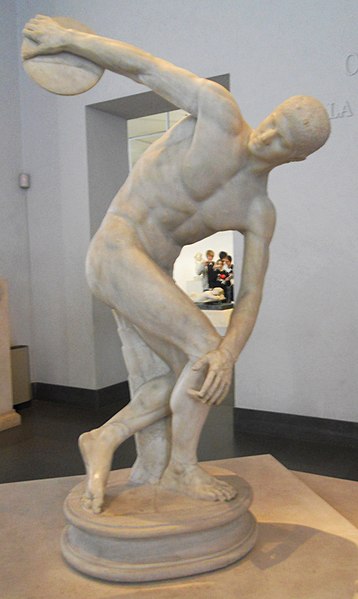
The Discus Thrower is another well-known sculpture from the Greek Classical period, which began in the fourth century B.C.
Discobolus of Myron is another name for this work, but its true authorship remains a mystery.
Although the original Greek bronze statue is now lost to time, several Roman reproductions of it survive to this day.
The sculpture shows a young guy midway through a discus throw, a famous sport that has been featured in the Olympics since since the games were first held.
One of the most well-known reproductions of this statue, created in the third century, is remarkably faithful to the original in both detail and artistry.
7. Alice in Wonderland, Central Park – José de Creeft

Character named Alice from Lewis Carroll’s Alice in Wonderland (1865). To the north of the Conservatory Water in Central Park, on East 74th Street, is where the monument stands.
On top of a giant mushroom, Alice reaches for the White Rabbit’s pocket watch. The Cheshire Cat peers over her shoulder, with the Dormouse at her left and the Mad Hatter at her right; in contrast to the serene Alice, both of these characters appear ready to explode into fits of laughter at any moment.
The publisher and philanthropist George T. Delacorte Jr. commissioned the sculpture from José de Creeft in honor of his late wife Margarita and for the enjoyment of New York City’s young people.
Unveiled in 1959, De Creeft’s sculpture is an attempt to recreate the fantastical Victorian illustrations by John Tenniel seen in the original edition of the book. Alice is said to look like Donna, de Creeft’s daughter.
The architects and designers of the Alice in Wonderland project, Hideo Sasaki and Fernando Texidor, installed plaques on the terrace surrounding the sculpture with inscriptions from the novel.
8. The Bronze Horseman – Etienne-Maurice Falconet
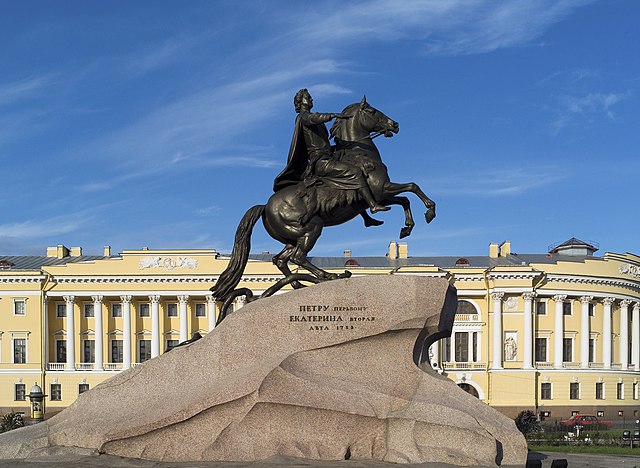
In Saint Petersburg, Russia’s Senate Square stands a bronze statue of Peter the Great on horseback. On August 7, 1782, it first welcomed visitors.
It was sculpted by the Frenchman Étienne Maurice Falconet at Catherine the Great’s request. Alexander Pushkin’s poem of the same name, written in 1833, is widely regarded as one of the pinnacles of Russian literature due in large part to the inspiration it provided. Saint Petersburg’s statue has become a city landmark.
The Thunder Stone, the largest stone ever moved by humans, serves as the pedestal for the statue. The stone was initially much larger and heavier, over 1500 tonnes, but was whittled down to its current size and weight of 1,250 tons for ease of transport.
9. Florence Baptistery South Portal Door Gilded Bronze – Andrea Pisano
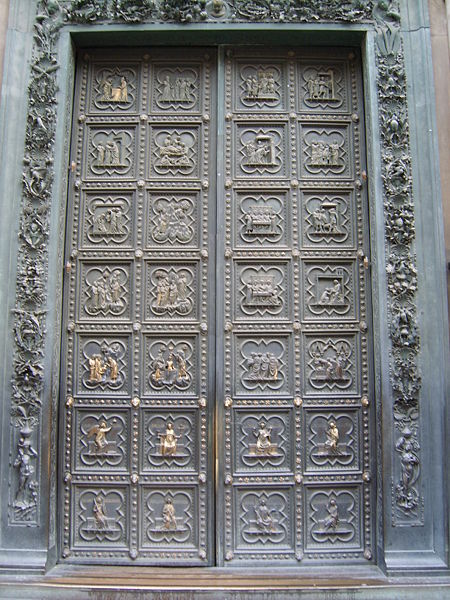
The Baptistery of Saint John, or the Florence Baptistery, is a minor basilica located in Florence, Italy.
The baptistery, which is octagonal in shape, may be found in both the Piazza del Duomo and the Piazza San Giovanni, opposite the Campanile di Giotto and the Florence Cathedral.
The Baptistery was built in the Florentine Romanesque style between 1059 and 1128, making it one of the oldest structures in the city.
The Baptistery is well known for its three sets of impressive bronze doors featuring sculptured reliefs. Lorenzo Ghiberti designed the north and east entrances, while Andrea Pisano was responsible for the south entrance. Michelangelo dubbed the east doors the Gates of Paradise.
10. L’Homme au Doigt – Alberto Giacometti
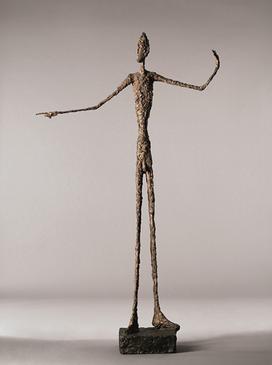
For the record-breaking price of US$141.3 million on 11 May 2015, the bronze sculpture L’Homme au doigt (“The Man with the Finger”; sometimes called Pointing Man or Man Pointing) by Alberto Giacometti was purchased.
Giacometti produced seven total copies of the sculpture (six regular and one proof). Museum of Modern Art in New York, Tate Gallery in London, and Des Moines Art Center all have copies of Pointing Man in their permanent collections.
Only one other is on public display, while the others are either in private collections or foundation holdings.

